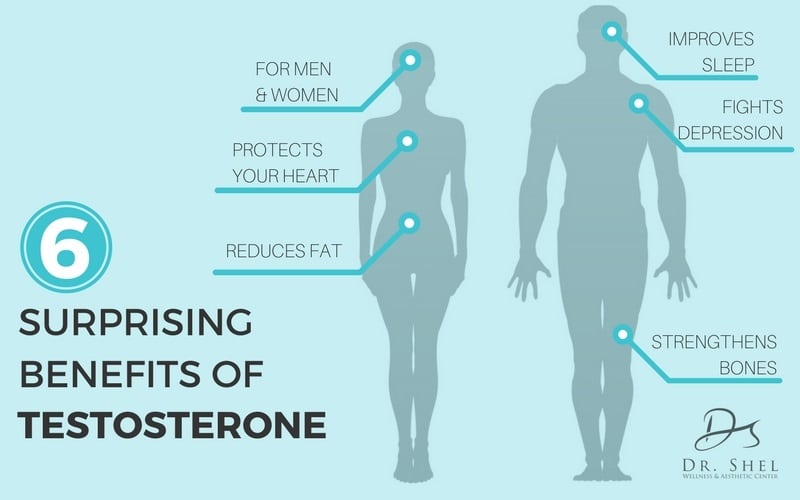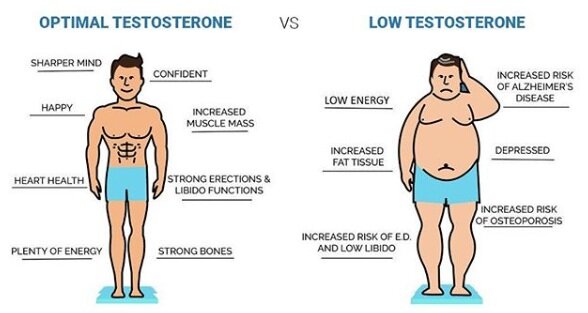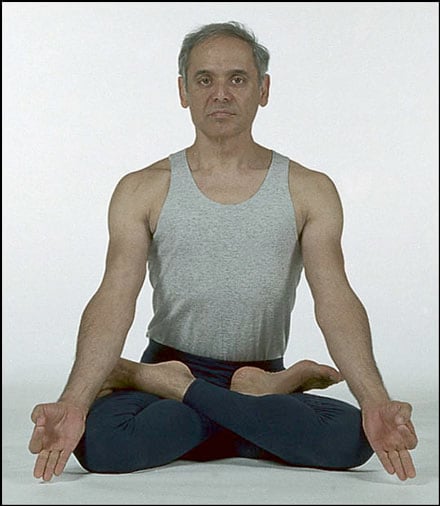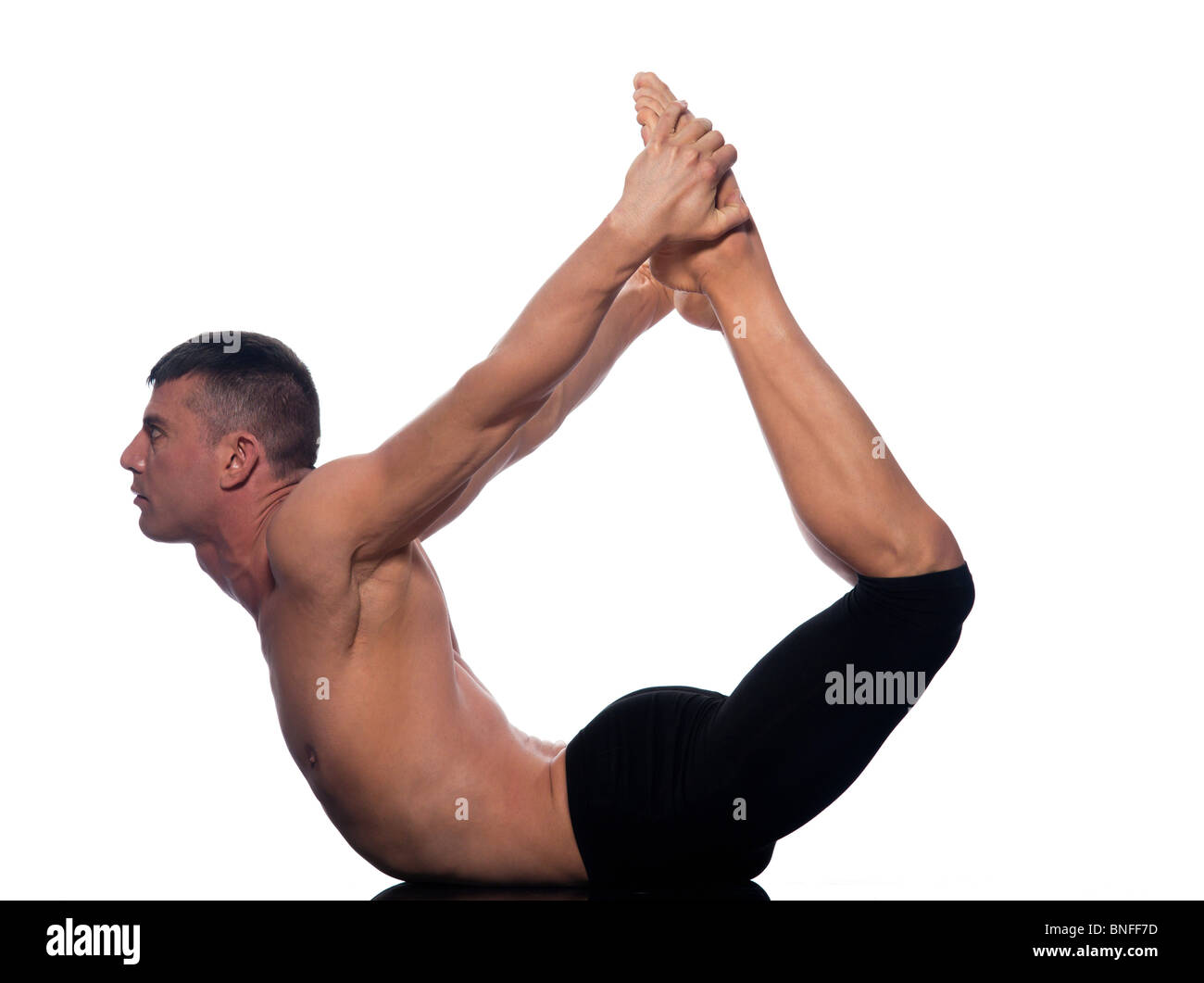What is Testosterone?
Testosterone is an androgen hormone produced by the adrenal cortex, the testes (in those assigned male at birth), and the ovaries (in those assigned female at birth). It is often considered the primary sex hormone associated with those assigned male at birth. Present in much greater levels in men than women, testosterone initiates the development of the male internal and external reproductive organs during foetal development. Testosterone is produced by the gonads (by the Leydig cells in testes in men and by the ovaries in women), although small quantities are also produced by the adrenal glands in both sexes. In women, testosterone is produced by the ovaries and adrenal glands. The majority of testosterone produced in the ovary is converted to the principle female sex hormone, oestradiol.

Functions of Testosterone
- Testosterone signals the body to make new blood cells, ensures that muscles and bones stay strong during and after puberty.
- Testosterone aids in learning and memory. It is especially associated with spatial intelligence.
- Testosterone enhances libido both in men and women.
- For biological males, testosterone stimulates the development of secondary sex characteristics associated with males (like body hair and muscle growth) and is essential in the production of sperm.
- For biological females, testosterone helps keep bones and the reproductive system healthy and contributes to the sex drive.
- A balanced testosterone level is important for fertility in any gender. Low levels of testosterone in men can cause infertility. High testosterone levels are associated with infertility in women.


How Is Testosterone Production Regulated?
The regulation of testosterone production is tightly controlled to maintain normal levels in blood, although levels are usually highest in the morning and fall after that. The hypothalamus and the pituitary gland are important in controlling the amount of testosterone produced by the testes. In response to gonadotrophin-releasing hormone from the hypothalamus, the pituitary gland produces luteinising hormone which travels in the bloodstream to the gonads and stimulates the production and release of testosterone.
As blood levels of testosterone increase, this feeds back to suppress the production of gonadotrophin-releasing hormone from the hypothalamus which, in turn, suppresses production of luteinising hormone by the pituitary gland. Levels of testosterone begin to fall as a result, so negative feedback decreases and the hypothalamus resumes secretion of gonadotrophin-releasing hormone.

Cortisol and Testosterone
Cortisol suppresses the production of testosterone in the Leydig cells located in the male testes. There is an area of the brain called the hypothalamus which is responsible for signaling the body to create testosterone. This part of the brain is affected by cortisol during stressful times, but when you are able to manage stress, you can suppress cortisol levels and allow your body to keep on producing testosterone at optimal rates.
Also, cortisol and testosterone both require substance for synthesis – cholesterol. If there’s too much cortisol in your bloodstream, the body will prioritize using the cholesterol for cortisol synthesis instead of using it for testosterone stability. If you’re not overly stressed, cholesterol can help create testosterone.
Meditation and Yoga help you manage stress and offer the perfect solution for how to lower cortisol levels and enjoy healthy T-levels.
What happens if I have too much testosterone?
- Polycystic Ovary Syndrome (PCOS) in women
PCOS is a common hormonal disorder that affects reproductive, metabolic and psychological health. It is estimated PCOS affects between 5 and 15% of reproductive-age women, and it is the most common cause of anovulatory infertility. Women with PCOS may experience irregular menstrual cycles, hirsutism, acne, male-pattern hair loss, subfertility and higher incidence of miscarriage. Reducing androgen levels, including testosterone, is key to managing these symptoms.

What happens if I have too little testosterone?
- Low testosterone levels can cause mood disturbances, increased body fat, loss of muscle tone, inadequate erections and poor sexual performance, osteoporosis, difficulty with concentration, memory loss and sleep difficulties. Current research suggests that this effect occurs in only a minority (about 2%) of ageing men.
- In adult men, low testosterone may lead to a reduction in muscle bulk, loss of body hair and a wrinkled ‘parchment-like’ appearance of the skin. Testosterone levels in men decline naturally as they age. In the media, this is sometimes referred to as the male menopause (andropause).

How we can manage?
Reduce Testosterone via Mindful Yoga
- Researchers found a one-hour mindful yoga class, done three times a week, reduced testosterone levels in women with PCOS by 29% over a three-month period. Other androgen levels, like DHEA, were also reduced, and depression and anxiety levels improved by 55% and 21%, respectively, according to the study in The Journal of the American Osteopathic Association.
Boost Testosterone via Yoga Asanas
The primary way that yoga boosts testosterone is by stimulating the parasympathetic nervous system. This is how yoga helps you to let go of stress and relax. There are also specific asanas that directly increases testosterone production by increasing circulation to the genital area.
1. The Cobra
A study conducted by Russian scientists in 2001, wherein the participants held the Cobra pose for 2-3 minutes, found that afterwards their testosterone levels had increased an average of 16%, but some as high as 33-55%. It was also found that the Cobra pose lowered cortisol levels.
The key to the pose is to lift your head and chest without the help of your arms, pressing the pubic bone into the ground. Keep your hands and arms shoulder-width apart. Keep your knees almost together. Now lower your legs and waist to the floor, so your legs are straight out behind you. Keep your upper body elevated. Look straight up while extending your arms to the floor. Keep your arms angled towards you. If you have neck problems and can’t look straight up then only look as far as what is comfortable.

2. Full Lotus
The full lotus requires you to sit on the floor with your legs straight and your arms at your side. Put your right ankle in your left thigh crease. Then put your left ankle in your right thigh crease. Rest your hands on your knees with your palms facing upward.

3. Locust Pose
This pose helps to improve testosterone levels, prostate health and alleviate erectile dysfunction. This pose looks simple, but it requires a lot of core strength.
Start by laying flat on the floor on your stomach with your arms at your sides. Keep your legs hip-width apart and straight. You don’t want your ankles to roll inward or outward. Inhale and lift your head off the floor. Exhale and lift your arms over your head and raise your feet. This is the beginner locust pose. To do a full locust, continue to raise your upper body, so you lift your upper spine. Extend your arms out to your sides and back so that you look a bit like a bird trying to fly.

4. Bow Pose
This is an intermediate yoga backbend pose which will strengthen your core and all of the muscles in your back. You will also notice that it improves your posture and spinal flexibility. This pose puts pressure on your abdomen, which will stimulate your digestion and reproductive organs. You should also feel relief from stress, anxiety, and fatigue.
To do this pose start by laying on your stomach. Bend your knees and bring your feet up and as close to your butt as possible. Now reach back and hold onto the outside of your ankles. You’ll then want to lift your heels towards the ceiling, so your thighs come off of the mat. At the same time, you will raise your head, shoulders, and upper torso off of the floor too. The goal is to lift your entire upper body off the floor so that you are only resting on your hips.


